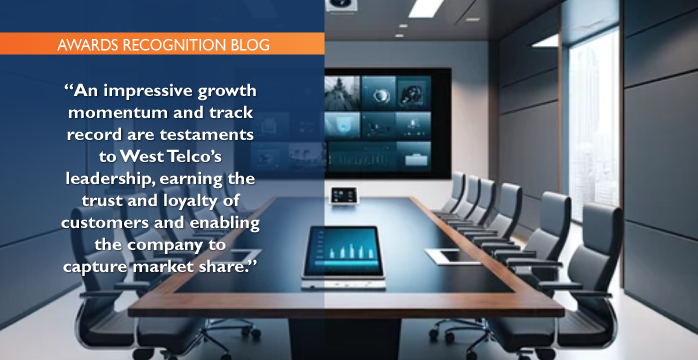The extraordinary growth trajectory of the bring-your-own-device (BYOD) phenomenon has been driven by the proliferation of smartphones and the consumerization of information technology (IT). In fact, Frost & Sullivan research indicates that nearly 70% of US businesses currently support BYOD. While some companies have attempted to frame clear policies to govern the use of personal devices, the lion’s share of BYOD endeavors still exists in an ambiguous gray area where employees use their own devices for work purposes without a clear arrangement of how to govern work versus personal usage. This ambiguity opens up security and privacy risks along with a range of questions related to management and expense reimbursement.
Whether you’ve already embraced BYOD or are still sitting on the fence, it’s time to assess your situation, and plan an organized strategy. These initial steps will put your company on track for success:
Step 1: Stabilize Your Current Mobile Environment
Many of today’s businesses continue to be overwhelmed when it comes to determining how to properly implement, manage, and monitor employee-owned devices. The rapid growth of mobility in the workplace often results in denial, confusion, and even disarray. Do you fully understand your company’s current mobile environment? If not, it’s time to perform a comprehensive assessment of the following:
- What mobile devices are your employees currently using to perform job functions? Are these company-owned or personal devices (or a combination of both)?
- What communications/applications/content are currently accessed or conducted for business purposes over personal devices? Has this been formally authorized by your company?
- What security measures are available to protect corporate communications/applications/content accessed/conducted over personal devices?
- For workers using personal devices to complete job functions, what measures are in place to ensure privacy for non-business activities conducted over their devices?
- Does your company have a formal mobile security policy? Has it been effectively communicated to employees?
Step 2: Prioritize Mobile Goals
Once you have a clear understanding of your current mobile environment, you can begin building a BYOD strategy blueprint. Did your initial assessment reveal any obvious concerns or gaps in security, privacy, compliance, analytics, or general mobility management? When defining mobile pain points and future goals, consider surveying your employees and department heads for recommendations. Delve into relevant benchmarking to identify best practices by competitors. The focus should be on identifying a secure solution to address the BYOD phenomenon while minimizing operational disruption and ensuring an easy and convenient path for employees.
Step 3: Identify the Right Partner
Developing a successful BYOD strategy obviously demands a significant amount of time and energy. And, frankly, the effort never really stops, as mobile solutions require 24/7 care and maintenance in order to stay current, effective, and secure. Why are businesses willing to bring in third parties to help with their mobilization efforts? Frost & Sullivan research indicates two of the largest barriers are a lack of internal mobility expertise and the lack of sufficient IT personnel. A proven third party vendor can neutralize both of these concerns.
Sprint MultiLine: A Win-Win for Businesses & Employees
Based on a recent Frost & Sullivan enterprise survey, the top criteria in the selection of a mobility partner remain steady, with security, ease of use, and affordability being the most important requirements for today’s businesses. Sprint MultiLine is an innovative mobile solution that not only addresses these critical selection criteria, but also caters to the evolving demands of businesses and employees in the era of BYOD.
Sprint MultiLine is an all-in-one app for BYOD devices that essentially creates two distinct lines on a single device—one for business and one for personal. The app works as a business phone without the need for an additional SIM card or separate device, delivering enterprise-grade functionality regardless of the employee’s carrier or smartphone model. In the app, users have access to a host of distinct business-ready features: a dialer, contact list, call logs, text messaging, voicemail, scheduler, auto-transfer, three-way conferencing, and a do not disturb setting. In sum, employees can continue to use their personal lines as they always have, with a separate business line (and associated features) securely housed on the same device in the MultiLine app.
For businesses concerned with compliance or regulatory standards, the Sprint MultiLine management portal provides business control over costs, wireless policy, individual call recording, and archiving. Further, MultiLine delivers granular visibility to business line metrics to review detail records and usage statistics in real time for performance tracking and easier expensing.
The Final Word
Businesses are facing important challenges to ensure seamless and secure communications and workflows in an era when BYOD has emerged as the preferred option for employees. Frost & Sullivan encourages businesses to conduct the 3-step process to stabilize, prioritize, and identify the optimal solution for their specific mobility requirements. While there are various prebuilt, off-the-shelf applications available, the Sprint MultiLine solution uniquely balances the reporting, security, and accounting needs of businesses while retaining employee freedom of choice and personal privacy. It delivers innovation in a containerized separation, as an enterprise BYOD solution that functions across network carriers and makes it easy for enterprises to confirm policy compliance, streamline billing, and eliminate the costs of hardware procurement and maintenance.





